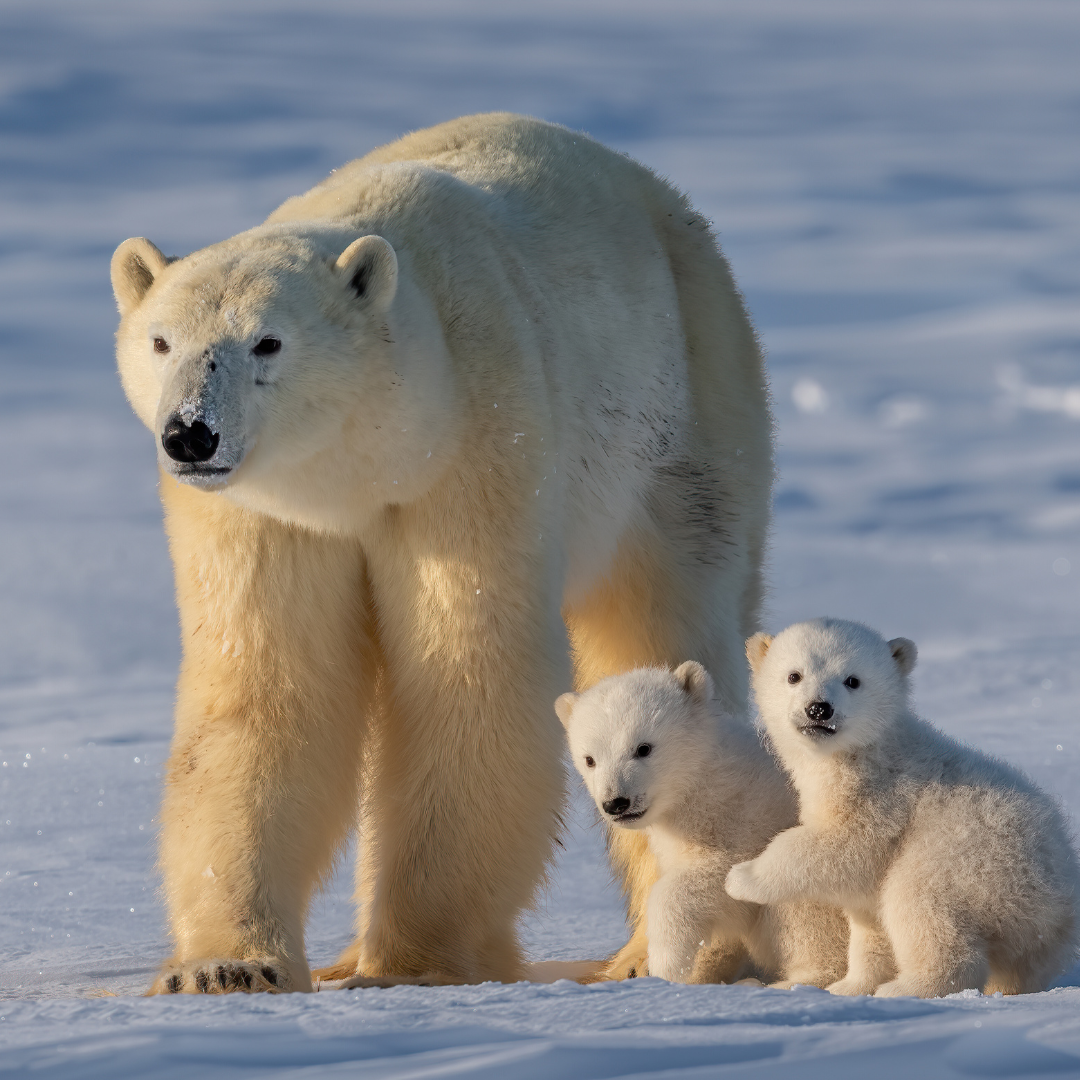In the frozen wilderness of the Arctic, an extraordinary predator has made its home – the polar bear. These majestic creatures have not only thrived but perfected the art of survival in one of the harshest environments on Earth. Join us as we delve into the incredible adaptations that allow polar bears to endure the unforgiving Arctic conditions and maintain their position as the apex predators of the icy realm.
A Cold-Weather Specialist:
Polar bears are uniquely adapted to survive in the extreme cold of the Arctic. Their thick fur is not white, but actually transparent and hollow, which helps trap heat from the sun and insulate their bodies. Beneath their fur, polar bears have a layer of blubber, providing extra insulation and serving as an energy reserve during times of scarcity.
Webbed Paws and Powerful Swimmers:
Polar bears’ large, webbed paws are specially designed for traversing the icy terrain. The webbing between their toes assists in providing traction on slippery surfaces, allowing them to traverse both frozen land and open water. These adaptations make them excellent swimmers, capable of covering vast distances in pursuit of prey or to access breeding areas.
Ice as a Hunting Ground:
The Arctic sea ice serves as a crucial hunting ground for polar bears. With their keen sense of smell, these predators can detect seals hidden beneath the ice from significant distances. Polar bears utilize their patience and stealth to approach seal breathing holes or wait for their prey to surface, relying on the element of surprise for a successful hunt.
Survival during Scarcity:
Polar bears have also adapted to cope with periods of food scarcity when the ice melts and seals become less accessible. During these times, they reduce their metabolism and enter a state known as “walking hibernation,” where they conserve energy by minimizing their activity levels. This unique adaptation allows them to withstand long periods without food.
Parental Care and Social Structure:
Polar bears exhibit remarkable parental care, particularly mothers with cubs. Females build maternity dens in snowdrifts or underground to give birth and provide a safe haven for their young. These dens offer shelter from the extreme cold and protect the vulnerable cubs during their early stages of development. Mothers also nurture and teach their cubs essential survival skills, preparing them for their own independent lives.
Adaptability and Climate Change:
The rapid changes occurring in the Arctic due to climate change pose significant challenges to polar bears. Diminishing sea ice threatens their hunting grounds and limits their access to prey. The resulting longer fasting periods and increased competition for resources put their survival at risk. Understanding these challenges is essential in formulating conservation strategies to mitigate the impacts of climate change and safeguard their future.
The ability of polar bears to adapt to the harsh Arctic conditions is a testament to their resilience and evolutionary prowess. Their specialized adaptations, from insulating fur to powerful swimming skills, enable them to navigate and flourish in an environment that would be inhospitable to most other species. By appreciating their incredible adaptations, we can further understand the importance of preserving the Arctic ecosystem and the urgent need for conservation efforts to secure the survival of these extraordinary Arctic giants.
If you have any further questions regarding polar bears or any other travel inquiries, feel free to let us know. #PolarBears #Arctic #Adaptations #Conservation #Survival




